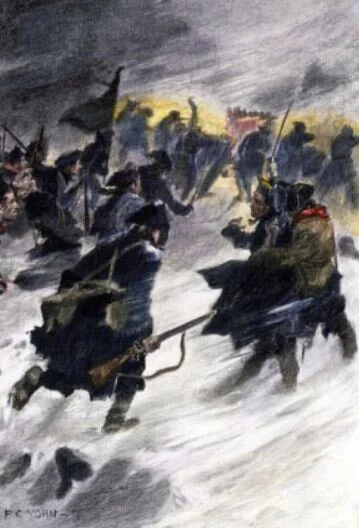Joseph Fenwick's Settlement - Catholic Immigration to Frontier Missouri
Joseph Fenwick led a group of Maryland Catholics to settle a tract of land in Missouri.
He has the same name as, and is related to, yesterday’s Founder.
They came from the same Fenwick Family but went in drastically different directions.
Joseph Fenwick
After the Revolutionary War, Joseph Fenwick decided to move west.
As the head of a branch of Maryland’s Fenwick Family, he brought with him his wife, children and slaves. Furthermore, he was able to convince several other families to join them.
First, they moved to Kentucky, but Joseph soon became friendly with De Lassus De Luzieres who was trying to settle land in modern day Missouri.
De Lassus De Luzieres
In April of 1797 Luzieres convinced Fenwick to move further west.
Joseph Fenwick originally settled his family in the New Bourbon area where he bought a house from a man named Israel Dodge.
Unfortunately, Fenwick and Dodge came into disagreement about the property and instead relocated to the land that Luzieres offered him.
One of Joseph’s sons, Dr. Walter Fenwick, would remain in New Bourbon for almost fifteen years before dying in a duel.
The Fenwick Settlement
Eventually, Joseph built a farm in a region that became known as the Fenwick Settlement.
Right on the edge of the Mississippi River, Fenwick Settlement eventually included twenty-five families and seventy slaves.
All of those who came were from Maryland and, like Joseph, were Catholic.
Although Maryland had been good to Catholics, it was seen as more beneficial to live under the authoritarian rule of Luzieres (a Frenchman acting on behalf of Spain) than stay in the United States because of the comfort of a shared religion.
This group was referred to in their time as both ‘English Catholics’ and ‘Maryland Catholics.’
Rest Stop
Unfortunately for Fenwick, the area he chose was not well suited for farming and the settlement fizzled out within a decade.
Joseph’s family chose to stay anyway, as he had picked a spot a safe distance from hostile Native Americans.
After his death, Fenwick’s wife and surviving sons established the Settlement as a popular resting point for travelers in the Mississippi.
Do you want to learn about other Catholics involved in the American Founding?
Enjoy this article:
The Catholic Who Signed the Declaration - Charles Carroll of Carrollton
A Catholic at the Constitutional Convention - Thomas Fitzsimons
John Carroll - The First American Archbishop
For more information on the Fenwick Settlement, parts of ‘Opening the Ozarks’ can be read for free here.
The Catholic religion has a very interesting place in the American Founding.
If you are interested in learning more I strongly recommend reading ‘Papist Patriots.’
Pick up a copy through the Amazon affiliate link below (you’ll support this site, but don’t worry, Amazon pays me while your price stays the same).
Want to get fun American Revolution articles straight to your inbox every morning?
Your in luck!
You can subscribe to my email list here.
You might also want to support Founder of the Day on Patreon.





